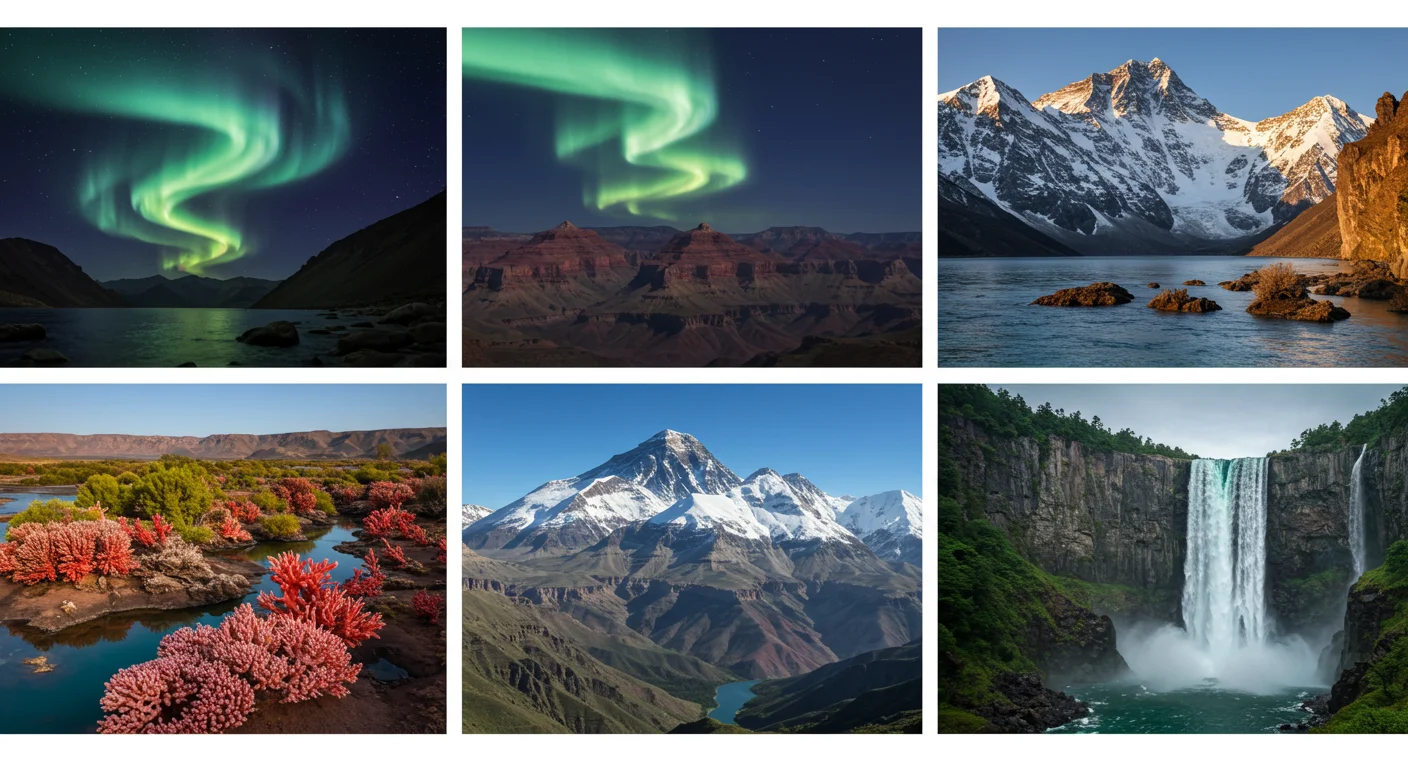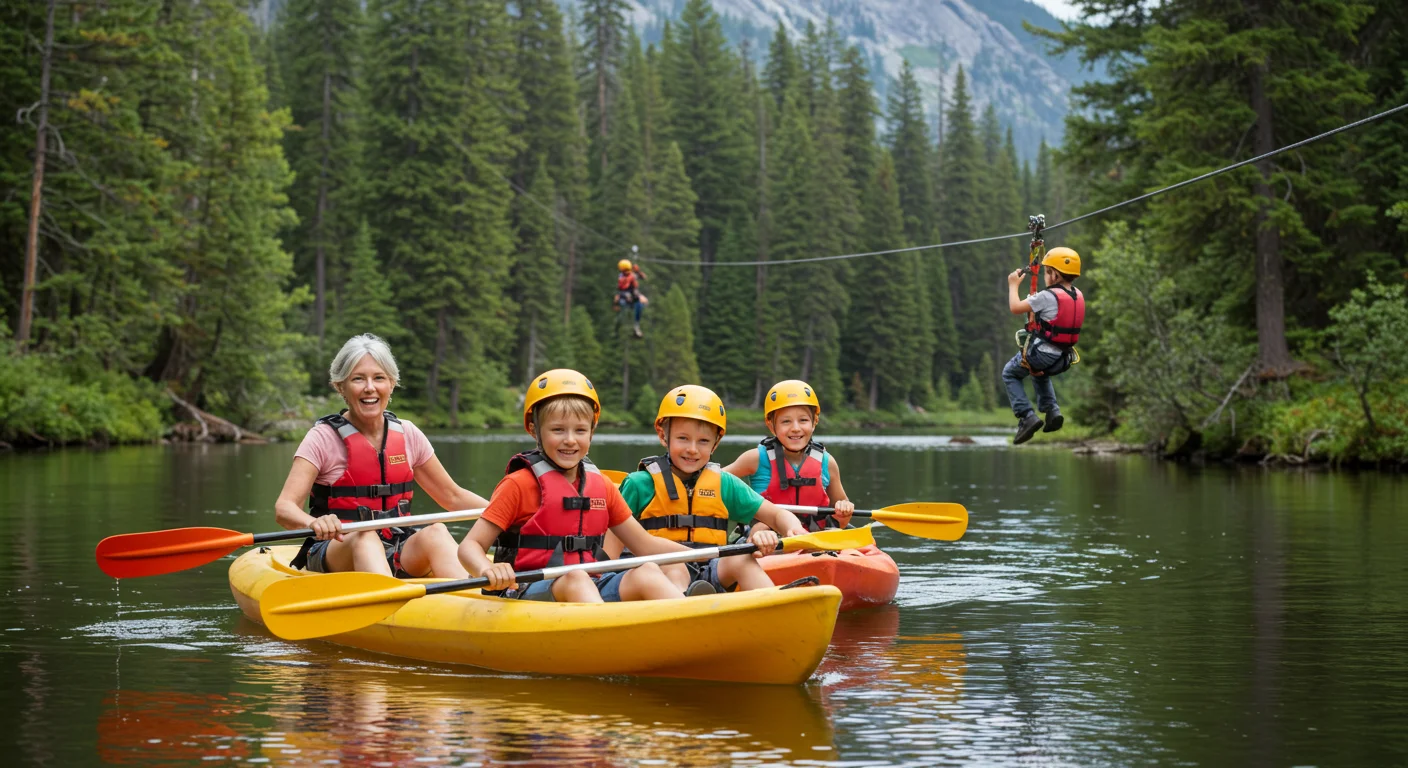The science behind 5 stunning natural wonders reveals how Earth creates breathtaking sights like the Northern Lights and the Grand Canyon. These marvels, shaped by nature’s forces, captivate us all. This guide explains their science in simple terms, perfect for anyone curious about our planet’s beauty.
1. The Northern Lights: A Sky Full of Color
The Northern Lights, or Aurora Borealis, light up the night sky with vibrant colors. They happen when charged particles from the sun hit gases in Earth’s atmosphere. Nitrogen and oxygen gases glow, creating green, purple, and red waves. This occurs near the North Pole, where Earth’s magnetic field pulls the particles.
- Best seen in winter in places like Norway or Iceland.
- Caused by solar wind interacting with Earth’s magnetic field.
- Colors depend on the type of gas and altitude.
Why Are the Northern Lights So Special?
The science behind 5 stunning natural wonders like the Northern Lights shows nature’s power. The lights are unpredictable, making them a rare treat. They form 60 to 200 miles above Earth, where the atmosphere is thin. Solar storms can make them brighter, but they are safe to watch.
Fun Fact: The Southern Lights, or Aurora Australis, happen near the South Pole!
2. The Grand Canyon: A Giant Carved by Water
The Grand Canyon in Arizona is a massive gorge, stretching 277 miles long and up to 18 miles wide. Over millions of years, the Colorado River carved it by eroding rock layers. Wind and rain also shaped its colorful cliffs, revealing Earth’s history like a giant book.
- Formed over 6 million years by erosion.
- Rocks at the bottom are nearly 2 billion years old.
- Weather continues to shape its edges today.
How Does Erosion Create Such Beauty?
Erosion is a key player in the science behind 5 stunning natural wonders. In the Grand Canyon, water and wind slowly wear away rock, creating steep walls and unique shapes. The river’s flow carries sediment, grinding down the canyon floor. This slow process shows Earth’s patience in crafting wonders.
3. The Great Barrier Reef: A Living Ocean City
The Great Barrier Reef, off Australia’s coast, is the world’s largest coral reef system, stretching over 1400 miles. Tiny animals called coral polyps build it by making calcium carbonate skeletons. These stack up over time, forming colorful reefs that house thousands of fish and marine creatures.
- Built by coral polyps over millions of years.
- Home to over 1500 fish species.
- Visible from space due to its massive size.
Why Is the Reef a Natural Wonder?
The science behind 5 stunning natural wonders includes living ecosystems like the Great Barrier Reef. Polyps work together, creating a habitat for diverse marine life. Warm, shallow waters help corals grow, but climate change threatens their survival. Protecting the reef is crucial for ocean health.
4. Mount Everest: Earth’s Tallest Peak
Mount Everest, in the Himalayas, stands at 29029 feet, the highest point on Earth. It formed when two tectonic plates collided, pushing the land upward over millions of years. Erosion and earthquakes continue to shape it, making it a dynamic wonder.
- Formed by the Indian and Eurasian plates colliding.
- Grows about 4 millimeters per year.
- First climbed in 1953 by Edmund Hillary and Tenzing Norgay.
What Makes Everest So Extreme?
The science behind 5 stunning natural wonders like Mount Everest involves tectonic forces. The collision of plates creates immense pressure, lifting mountains. Harsh weather and low oxygen at high altitudes make climbing Everest dangerous, yet it draws adventurers worldwide for its majestic presence.
5. The Amazon Rainforest: Earth’s Green Lung
The Amazon Rainforest in South America covers over 2.7 million square miles. It’s called Earth’s lung because it produces 20 percent of the planet’s oxygen through photosynthesis. Millions of plant and animal species thrive here, making it the most biodiverse place on Earth.
- Holds over 400 billion trees across 16000 species.
- Produces oxygen via photosynthesis in dense forests.
- Home to unique animals like jaguars and sloths.
How Does the Amazon Support Life?
The science behind 5 stunning natural wonders highlights the Amazon’s role in Earth’s ecosystem. Trees absorb carbon dioxide and release oxygen, regulating the climate. The forest’s rivers, like the Amazon River, support life by providing water. Deforestation threatens this balance, so conservation is vital.
Why These Wonders Matter
Each of these natural wonders teaches us about Earth’s power and fragility. The Northern Lights show solar connections, the Grand Canyon reveals geological history, the Great Barrier Reef supports marine life, Mount Everest displays tectonic might, and the Amazon sustains global ecosystems. Understanding their science inspires awe and responsibility.
How Can We Protect These Wonders?
Protecting natural wonders requires action. Reduce carbon emissions to help the Great Barrier Reef and Amazon. Support conservation programs for forests and parks. Visit responsibly—follow guidelines to avoid damaging sites like the Grand Canyon or Everest. Small steps make a big difference.
Conclusion: Explore and Protect Earth’s Wonders
The science behind 5 stunning natural wonders connects us to Earth’s incredible processes. From glowing skies to towering peaks, these marvels inspire wonder and teach us about nature’s power. Let’s protect them for future generations. Start exploring these wonders today—plan a trip or learn more online!




